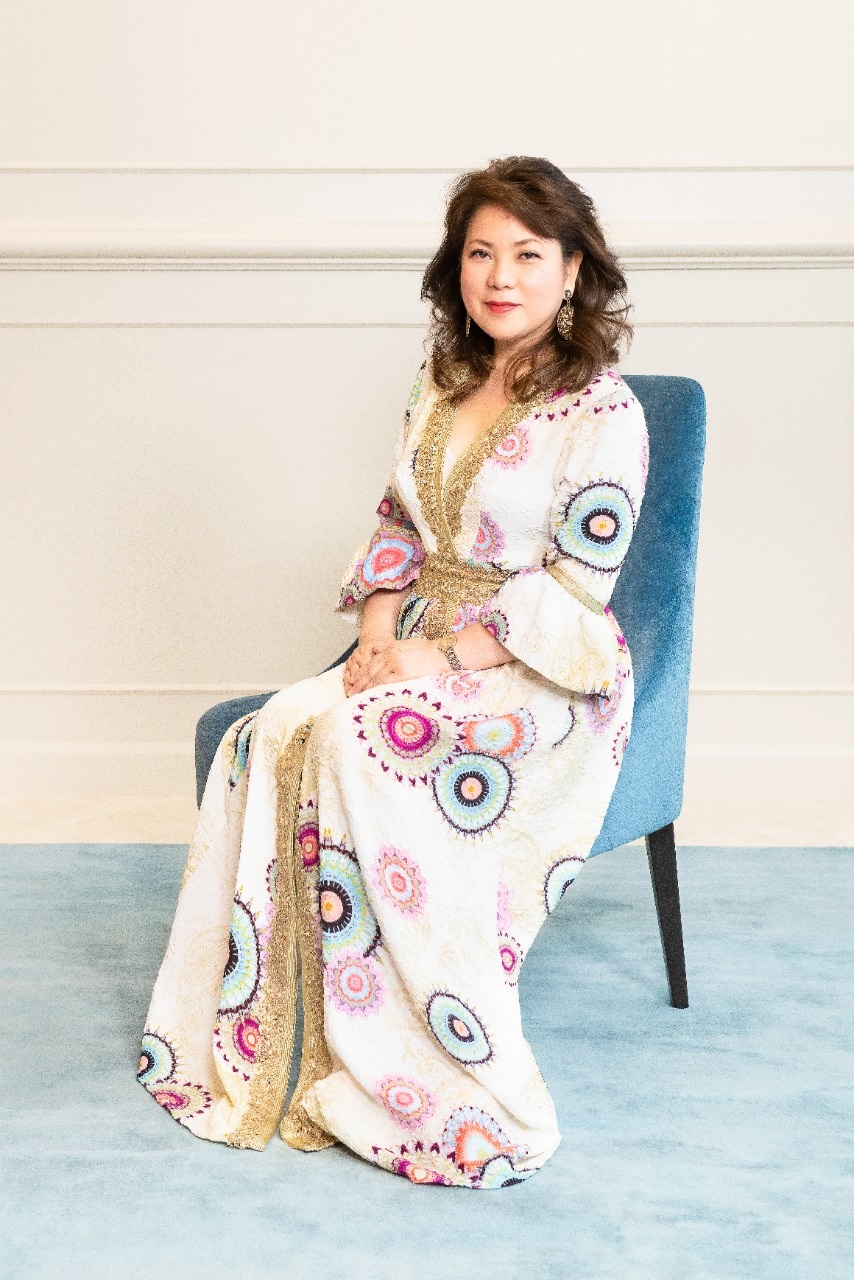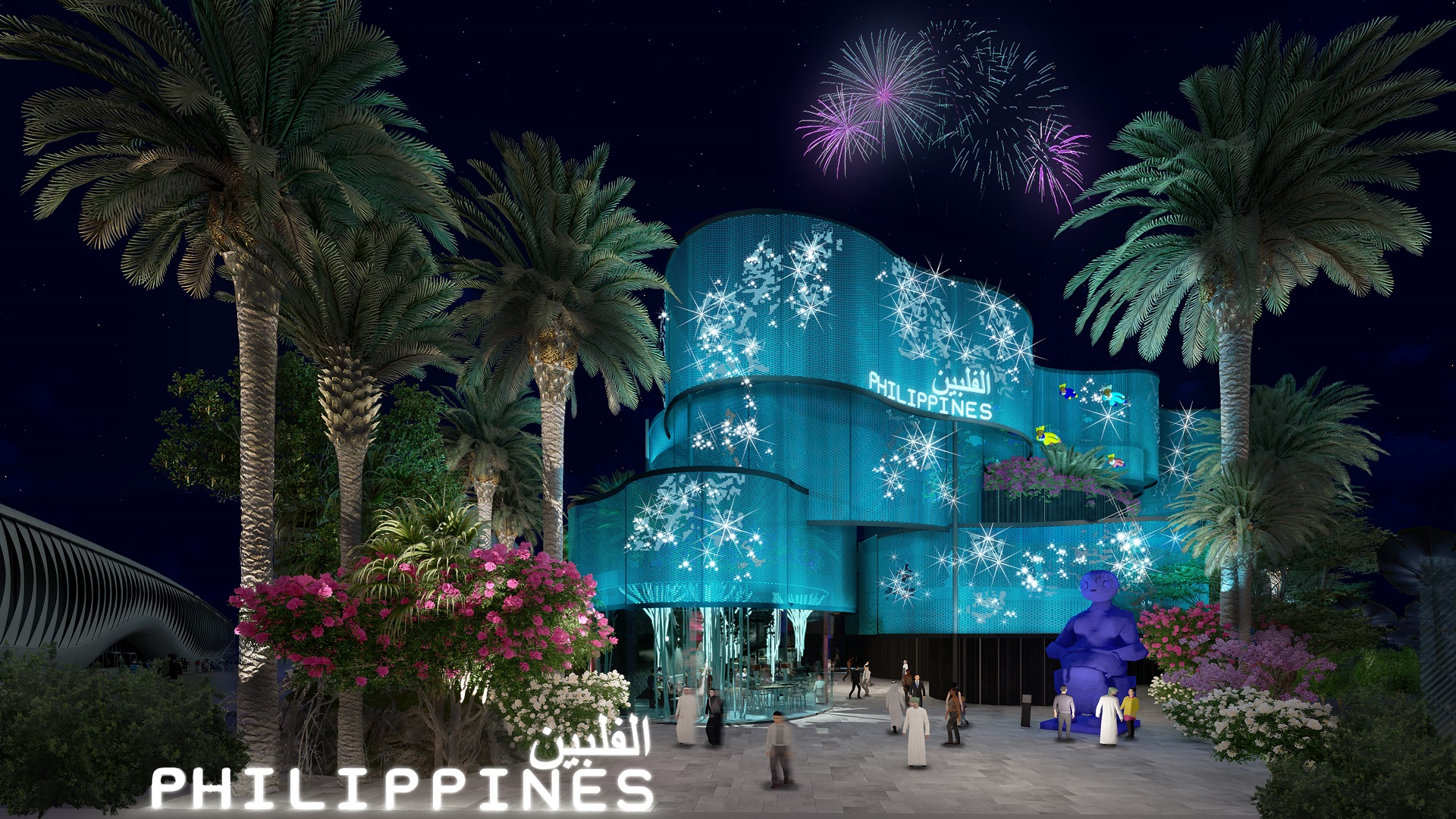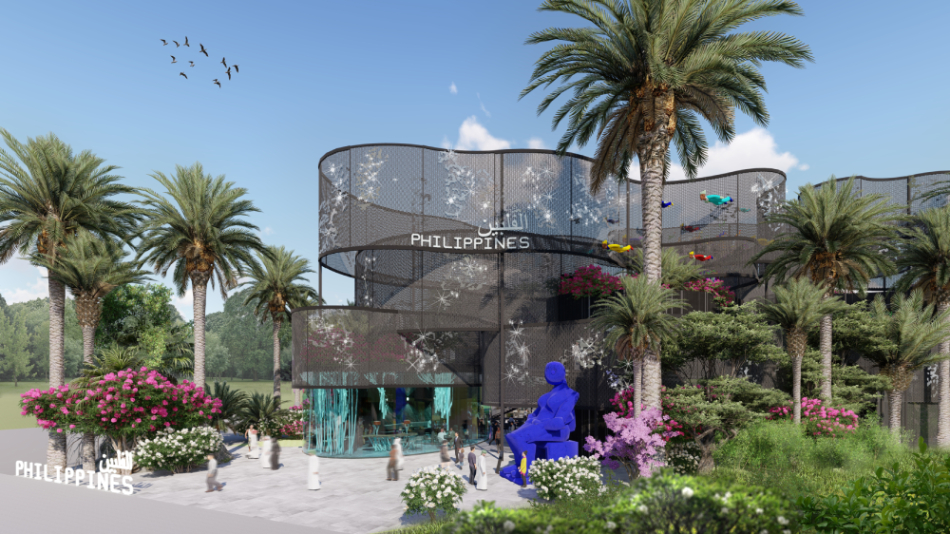Though the global pandemic has led to a slew of major changes in the forthcoming Expo 2020 Dubai, the construction of the Philippines’ ‘Bangkota’ pavilion remains unhampered and key plans formulated by its team prior to the emergence of COVID-19 stay on, said the Department of Trade and Industry (DTI).
DTI Assistant Secretary for the Trade Promotions Group and PH Expo 2020 Dubai, Alternate Commissioner General Rosvi C. Gaetos said the ‘Bangkota’ is nearing its full completion rate and will soon be ready to captivate the curiosities of the world in the post-pandemic era.
“We are 97% complete with the pavilion; we’re lucky to have a very good building contractor and also a very good project management team,” said Gaetos. “By August 30th, the fully completed pavilion will be turned over to us. That’s the time we can start the technical rehearsals in preparation for the opening this October. So, we are very much ready.”
“I’m glad that with this Dubai Expo, the Philippine government has done all out, in support for budgetary and otherwise. If not for the pandemic, we would have really accomplished everything as early as last year,” she added.
Although the construction, she said, is progressing on all fronts, and in no time would be ready for the much-vaunted largest event ever to be staged in the Arab world, the process had not come easy stemming from the limitations of mobility, especially during the height of the pandemic last year when mutual isolations between countries had dawned.
While they were trying to mount the re-imagined 4,000 years story of the Philippines through the pavilion, the Assistant Secretary said the DTI also had to ‘re-imagine’ ways to supervise the mega-project remotely to ensure that the contractors were bringing to life the designs, true to the vision and ideas of the creative team.
“We were off-site when the pandemic hit; we just came back [from Dubai] to Manila. So it was a big challenge. [Nonetheless], it appears that the vision of the architect and of the government has been met. The only thing that’s missing now would be putting together the Visitors’ Journey to the exhibits. It’s actually the last piece that we are finalizing now,” she said.
“The postponement [of the Expo last year],” she added, “was also good for us because it gave us an opportunity to fine-tune many things. But everything was being done virtually because we could not travel to Dubai to inspect the pavilion onsite. It really became a test of our patience and a test of our creativity to be able to build the pavilion with us here.”
Going to many great lengths just to keep the ground running and meet what had seemed to be impossible during the extraordinary global circumstances set this enormous overseas endeavor apart from the various Philippines’ expo participations in the past, indeed.

Targets remain big as before
The DTI Assistant Secretary admitted that uncertainties had come into play resulting from the disruptions that spiraled during the pandemic.
“The biggest impact of the pandemic is the uncertainty created in our plans. We may have been successful in delivering the pavilion according to our vision and to our goals, but how sure are we that visitors will come and visit it? How sure are we that people will appreciate what we have done? Again, this is the most expensive Philippine pavilion that the government has ever undertaken. I guess that’s the biggest question mark that the pandemic brought to fore,” she related.
“The responsibility for delivering rests largely on the shoulders of the organizers, but they had assured us that the number of target visitors remains. If they can deliver that, we will be incredibly happy customers.”
With the UAE achieving milestone after milestone even amid this global crisis, however, DTI expressed confidence that the visitors target of 25 million during the six-month-long mega-event would be hit, bolstered by Dubai’s proven mantra: ‘Build it and they shall come’.
In the middle of this month, the UAE placed on top of the global rankings in terms of vaccination rate, overtaking Israel, after it administered more than 120 doses of the COVID-19 vaccine per 100 people.
Before this, the Gulf country’s major push to inoculate its nationals and residents alike had proved to be an effective booster shot in gaining the confidence of consumers across the globe. It was named the No. 1 most resilient country in the world for its response to the COVID-19 pandemic in the Middle East and No. 2 worldwide by the Consumer Choice Center (CCC), a non-for-profit organization representing the rights of consumers in over 100 countries.
Taking all these into consideration, the sight of Expo’s success is imminent proving the world once more the other mantra of Dubai that ‘nothing is impossible’ with a bold vision and optimism.
Bangkota’s sustainable design tested
The Bangkota pavilion, whose design links the deep past of the Philippines through the millennia with the future of connectivity for the Filipino—and expressed through architectural, musical, visual/plastic representation—was smartly, rightfully mounted in the Sustainability District of the Expo.
Not only the cultural sustainability of the Filipinos being highlighted by its design and concept, the sustainable materials—all sourced from the UAE—was also accentuated when the mobility disruptions struck.
“One thing about the pavilion design is that there’s no need for us to bring anything from the Philippines. We are talking of ideas being brought to life in the pavilion using Dubai resources and Filipino suppliers in Dubai. We had to make it that way. Otherwise, it would be a nightmare trying to bring in shipments from Manila to Dubai, especially when the pandemic struck.
“The design of the pavilion was, indeed, very smart and intelligent in the sense that we don’t have to be bothered by supply chain problems. We did not have to depend on Manila shipments,” Gaetos highlighted.

Expo, a business concierge
The UAE is an attractive market for Philippine products, but the potential is still waiting to be tapped. When asked what made the Philippines say ‘yes’ to the Expo, Gaetos said that the government might have seen the global event as a business concierge that could build new opportunities and partnerships in terms of trade and investment.
“Most probably it’s our trade and investment [relationship] with Dubai. I cannot say it’s the reason, but our trade and investment [with them] is still something that’s being built. Of course, the potential has always been there, but it has not been maximized yet,” she asserted.
Last year, the Philippine Trade and Investment Center in Dubai said Filipino brands were becoming more available in the mainstream markets in the UAE alongside other products from Asia, Europe and the United States. They also noted an increasing appetite for Filipino food products there thanks to the strong presence of Filipino workers and residents.
This interest had not waned during the pandemic. The country’s food exports to the UAE from January to June 2020 had sustained its growth—including processed food/beverage exports ($10.86 million), pineapple/byproducts ($14.02 million), fresh bananas ($12.9 million), etc.
Until the 1970s, Gaetos asserted that the government had been constrained by its lack of budget to go all-out in its overseas expo participations. “In effect,” she said, “there was always something missing, something that we could not deliver, simply because of lack of resources. But somehow, we were still able to deliver.”
In stark contrast, she continued: “The Philippine government is very much supportive in terms of budget and otherwise. This is one Expo where there is no subsidy from the organizing host in the building of the pavilion.”
She explained that usually, the organizers would give some sort of subsidy in terms of pavilion construction. “This time around, we had to build it from zero. It’s a self-built pavilion by the Philippine government. And it’s something that the Filipinos can really be proud of.”
‘Unbelievable combination’
Gaetos’ expertise in leading the charge for the country’s previous expo participations is hammered by decades. She also helped launch some of the most successful, smartest branding campaign for the Philippine tourism. This includes the internationally-recognized ‘WOW Philippines’, along with the ‘Visit the Philippines’ and the ‘Make It Manila’ campaigns.
With long years of experience in both tourism and trade, she noted that it is her first time to witness “an unbelievable combination of a global event being held in a country dominated by Filipino workforce”.
“That alone,” she said, “was a good reason for President Rodrigo Duterte to say that, “We have to put our best foot forward and we must invest on it because we have so many Filipinos there [in the UAE] who should be proud of our participation.”
Hence, with such a directive from the chief executive, the pressure to go the extra mile in order to ‘deliver’ had become even greater, but their team had risen to the occasion. “This is 10 times more difficult than what I did in Japan, 20 times more difficult than WOW Philippines and other campaigns I have undertaken before,” shared the DTI Assistant Secretary.
She hopes that, with the President extolling the overseas Filipinos (OFWs), the OFW community in the UAE and the Middle East would reciprocate it by visiting the Philippines’ very own pavilion.
“They have to come to us, visit the pavilion as a community, and create a community spirit there. Without them and the visitors, the pavilion will be a dead building. We urge them to start talking about the narrative of the Filipinos as conveyed by the Bangkota because it is an amazing story that needs to be told,” said Gaetos.




